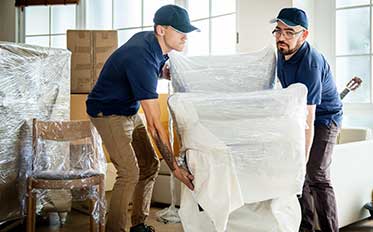
How Hoarder Cleanouts Help Restore Your Home’s Functionality
August 1, 2025
Foreclosure Cleanouts: What You Need to Know
August 1, 2025Why Estate Cleanouts Are Important for a Smooth Transition
Many people underestimate how deeply practical details shape emotional journeys. When possessions linger long after loved ones pass or life stages shift, they become anchors—not comforting keepsakes but stumbling blocks. Navigating that territory matters. Clearing out an estate doesn’t merely free physical space; it disentangles memories, obligations, and unspoken burdens. With thoughtful removal of excess, the path to fresh beginnings becomes less cluttered, less fraught, and more open.
Behind the logistics lies a story of transition. The weight of things—not just furniture, papers, mementos, appliances—carries emotional gravity. Letting go of each item can prompt nostalgia, relief, uncertainty. But when done attentively, clearing the estate becomes an opportunity to reflect, honor, and then move forward. The invisible benefit of a clean sweep often reveals itself in the lightness that follows—and that sets the stage for smoother turning points.
The Calm Brought by Clearing Tangled Belongings
Sweeping through an estate and easing out the crowded accumulation can feel like breathing fresh air after months spent indoors. Every removed item takes a little of the lingering chaos with it. Rooms that once held leftover commitments and unopened reminders suddenly emerge as calm breathing spaces. Order imprints itself on the soul as much as the eyes. That sense of calm grounds people in the moment and lets them see what’s next more clearly.
Emotionally, the chaos of clutter is heavy, as if the past becomes physically suffocating. Releasing objects becomes a gesture of self-care and transition. Rooms become blank canvases rather than museum exhibits of moments long gone. As surfaces clear, mind clarity often blooms. Instead of being stalled by what remains, people find themselves turning toward what lies ahead—with renewed orientation.

Honoring Memories Without Letting Them Stall Progress
Letting go of certain pieces doesn’t mean erasing what matters. Rather, it’s choosing which memories to carry forward and which are holding the heart back. Items tied to stories—letters, clothes, outdated gadgets—can accumulate emotional charge that clogs present clarity. Taking care to sort through them creates space to decide what’s essential. The process becomes a ritual of respect: choosing memories that uplift instead of memories that weigh.
Once unnecessary objects are gone, what’s left can feel more precious. The few curated keepsakes stand out with intimacy when not buried under layers of forgettable clutter. Progress doesn’t reject the past—progress embraces what’s meaningful while gently letting go of what no longer serves. The act of estate cleanout becomes a quiet homage rather than an enforced erasure.
Streamlining the Logistics of Estate Settlement
Beyond emotion, there lies the grinding practical side: deadlines, appraisals, paperwork, property transfers. Stuff left behind becomes a logistical stumbling block. Clearing unnecessary items simplifies valuation, enables smoother appraisals, and accelerates processes like closing sales, transferring titles, or dividing assets. Less physical clutter means fewer details to wrangle with the professionals engaged in the transition.
Attorneys, executors, real estate agents—all operate more efficiently when distraction-free environments present clearly what’s in scope and what’s already resolved. Swept floors, emptied closets, cleaned corners frame the task at hand instead of muddying it. That gives both professionals and grieving survivors a sense of forward motion. Efficiency here also brings respect—for everyone’s time and emotional energy.
Supporting Heirs in Releasing Overwhelming Clutter
For heirs, overwhelm often arrives disguised as sentimental attachment. There’s guilt in getting rid of things, fear of forgetting, worry about upsetting others. A guided cleanout supports heirs by offering structure, making decisions feel less arbitrary. Each move becomes intentional, not reactive. The process honors uncertainty, allowing individuals to pause and ask whether an item demands preservation and why.
As clutter recedes, heirs experience glimpses of possibility: the ability to reimagine spaces without the pressure of inherited weight. Rooms once brimming with detritus open to interpretation and healing. That clarity gives heirs a platform for creative remembrance, rather than obedience to accumulation. It helps them define what feels right for the future instead of surrendering to what’s already there.
Safeguarding Health and Preventing Hazard Escalation
Older estates can harbour unseen hazards—dust, mold, pests, deteriorating materials. Cluttered spaces can conceal risks until they become problems. A cleanout becomes not just organization, but a form of detox. Clearing built-up debris often reveals maintenance needs, structural flaws, or health-threatening buildups that otherwise lurk in shadows, unseen and unaddressed.
By bringing hidden issues into the open, cleanouts allow timely remediation—whether that means pest control, mold abatement, repairs, or sanitation. That protects anyone entering the space, especially elders or children. Clearing the estate becomes an act of care, safeguarding the safety of future occupants and those helping in the transition.
Preparing Spaces for New Beginnings
An estate cleared thoroughly readies rooms for whatever comes next—sale, downsizing, fresh occupancy, new purposes. Empty spaces allow light to bounce where clutter once absorbed it. That shift isn’t only aesthetic; it’s psychological. People start envisioning the next chapter: a room as home, as studio, gallery, rental, or family living space.
Once cleared, spaces convey potential, not history. That sense of possibility attracts interest, whether from buyers, renters, or future tenants. Spaces that feel open scene-set for new stories, inviting rather than confounding visitors. In that way, a cleanout becomes an invitation—both for the present occupants to move forward and for new energy to arrive.
Easing Emotional Burdens When Time Is Ticking
Transitions are often time-sensitive—estate sales scheduled, probate calendars looming, new living situations demanding urgency. Lingering clutter becomes a ticking clock’s antagonist. By tackling cleanout decisively, individuals manage anxiety: removing pressing decisions, meeting deadlines, and resolving what can feel open-ended.
When time pressure pares down indecision, the cleanout becomes a kind of release valve. Decisions that once weighed heavily become steps toward conclusion. The structure of clearing unneeded items gives anxious minds alignment: choose what stays, what goes, what matters now. Each removal lessens the load that so often presses on the mind, helping people reclaim time and attention for what matters most.
Valuing Sustainability and Ethical Disposal
Part of the cleanout story lies in how items depart. It’s not just about tossing; it’s about steering toward reuse, donation, recycling, and appropriate disposal. This choice shapes the legacy of what’s leaving behind. By diverting usable items from landfills, the estate cleanout becomes ethically mindful, not just efficient.
Scouring through possessions offers opportunities to redirect goods to community centers, thrift shops, or recycling programs. Things once beloved by one household can now serve someone else. That evolutionary afterlife softens departure, embedding purpose and responsibility. In so doing, the process becomes conscientious, ensuring that transition respects people, planet, and shared resources.
Bridging Old Chapters and New Endeavors
Every estate cleanout is less about erasure and more about bridging. It lifts the final traces of one chapter to make space for the next. As rooms empty, the narrative shifts—from what has ended to what’s about to begin. That transition isn’t abrupt or cold; it’s a thoughtful handoff from past to future, guiding memories without tethering to them.
Within cleared spaces, healing becomes visible. As items that no longer belong exit, energy flows differently. Absence isn’t emptiness—it’s invitation. And in that invitation, people glimpse clarity, possibility, hope. A clean estate becomes a welcome mat for what’s next, rather than a relic of what’s already past.
Conclusion
Deliberately orchestrating an estate cleanout transforms what might feel like an overwhelming burden into a liberating passage. It eases emotional weight, clarifies what truly matters, simplifies logistics, and ignites the potential of unspoken next steps. And when that process is handled with care, respect, and intention, the transition unfolds more smoothly and more meaningfully.
In Santa Rosa CA, North Bay Junk Removal stands ready to help you navigate this sensitive journey with compassion and efficiency. Reach out at 707 478 6817 or via northbayjunkremoval1@gmail.com to bring clarity and calm to your estate transition.



